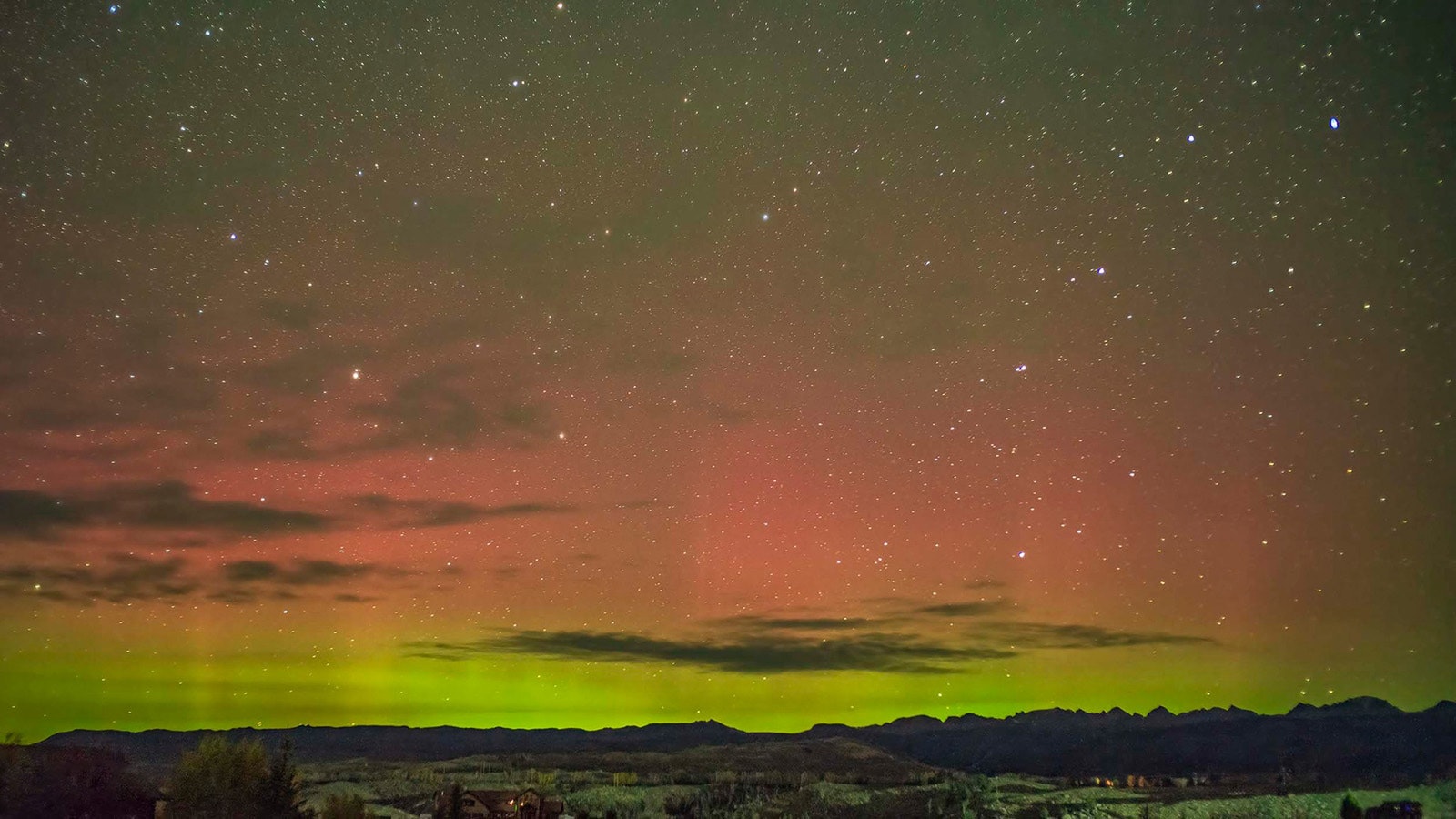The Space Weather Prediction Center (SWPC) has issued a Severe geomagnetic storm watch for June 1 and 2. That means there could be a dazzling aurora in the night skies over Wyoming.
A powerful coronal mass ejection (CME) erupted from the Sun on the evening of May 30. It’s expected to reach Earth by Sunday evening and persist into Monday.
The SWPC categorized this CME as a Severe G4 on a scale that peaks at G5. Storms of this intensity are “very rare” and usually lead to spectacular auroras, visible as far south as Alabama, so Wyoming should have an even better view.
Maximizing The Maximum
The last time Wyoming experienced a CME this intense was in May 2024, although the SWPC said it’s “unlikely” this G4 geomagnetic storm will reach the same intensity. Last year was an excellent year for auroras worldwide due to the climax of the sun’s 11-year solar cycle.
“We passed the sun’s solar maximum in October,” Jan Curtis, a retired meteorologist and former Wyoming State climatologist, told Cowboy State Daily in January. “We get a lot more CMEs generated from the sun in the years around the solar maximum, and the sun was very active in 2024.”
Curtis anticipated that 2025 could be a great year for auroras. The four years around the solar maximum are typically when the sun generates CMEs strong enough to reach Earth and manifest as auroras throughout the Northern Hemisphere.
“I would say we’ll get at least another handful of auroras over the next few years, and possibly many more, where people at the mid-latitudes will get to see them easily,” he said. “The sun is very active right now, and it’ll keep generating CMEs throughout the year.”
When, Where, and Will We
Forecasting CMEs can be tricky. While the SWPC anticipates a Sunday arrival, timing it is difficult due to the current patterns of solar winds.
“We will not know the true nature of the CME structure until it arrives at our sol,” the SWPC said in a statement.
When the CME arrives, it will be most visible in the northern skies - that’s why auroras are called “the Northern Lights.” The window of arrival is sometime between noon and 9 p.m. on Sunday, but that will get more precise as the CME gets closer.
“An Earth-directed CME can reach the planet in as little as 15 to 18 hours,” said Max Gilbraith, planetarium coordinator at the University of Wyoming. “Slower ones will take a few days to get to us. It takes really advanced modeling to see how they’ll behave once they reach Earth’s atmosphere.”
The bigger question is whether the weather will cooperate. The National Weather Service forecasts scattered showers and thunderstorms across Wyoming starting Sunday afternoon and continuing overnight.
Cowboy State Daily meteorologist Don Day often fields questions about when, where, and how to see auroras when the Space Weather Prediction Center sees one coming. Unfortunately, it’s nearly impossible to get an extended aurora forecast.
“How often do we hear, ‘We’re going to have auroras tonight,' and they don't happen,” he said. “ You have to stay on top of aurora forecasts. I recommend following the SWPC and NASA to know when the chances might be better on a given night than on other nights."





